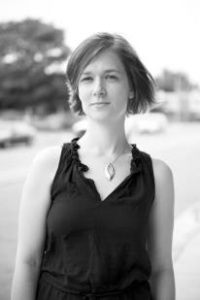As part of a new series at Anthropologizing, I’ll be posting some interviews with practicing anthropologists about their professions, backgrounds, and how they’ve been able to apply their anthropology training in the workplace. This week’s Anthropologist in Practice is Freelance Architect Allison Hennie of Memphis, TN.
I am self-employed and do freelance work for several clients, including a museum exhibit design firm and a community development corporation. Typically, I also have an independent project in the works. I’m also a full-time student again with a graduate assistantship at the C.H. Nash Museum at Chucalissa.
The search continues to find a title that describes what I do these days. Depending on the situation, my default answer is “licensed architect”. This response usually results in someone demanding free design advice to remodel a room in their house. On other occasions, I’ll expand my answer and mention my graduate studies in anthropology. Sometimes I’m asked by others how I can meld the two fields of architecture and anthropology. Right now I’m exploring the interface of these two fields through museum studies.
My work involves a little bit of everything, but lately I turn other people’s ideas into tangible products. These products have taken on the form of architectural drawings for exhibits and museum spaces, budgets, grant applications, project proposals, graphic layouts, and formatting the qualitative analysis of research..
Tell me about your anthropology background. What were some of your favorite research projects, subjects, courses, or experiences as an anthropology student? Do you have a favorite anthropologist (past or present)? What are you most passionate about when it comes to anthropology?
I have an M.A. in Urban Anthropology from the University of Memphis, a B.Arch (Bachelor of Architecture) from Carnegie Mellon, and am currently enrolled in the Museum Studies Certificate Program at the University of Memphis. My interests lay in the interface between anthropology and architecture, as in defining, interpreting and experiencing places.
One insightful moment that sticks in my head from my anthropology training is a discussion I had with a professor about kitchens. She was trying to get me to think more as an anthropologist and less as an architect. Our conversation started with my description of the imaginary lines between the sink, cook top and refrigerator, also known as the “kitchen work triangle”, and ended with my professor talking about the changing role of women in a domestic kitchen. It was a moment where the dots started connecting.
I don’t have a favorite anthropologist, but a few authors I recently read or reread include Fredrik Barth, Ulf Hannerz, J.B. Jackson, Anne Spirn, and Yi-Fu Tuan.
How have you been able to use your anthropology training in your current job? What specific training, skills, and competencies have been most useful to you?
The more interesting work-related experiences tend to be about educating others about either anthropology or architecture. One skill from my anthropological training that I find marketable and continually try to refine is writing and editing. It’s important to communicate with a clear, open, and engaging style.
How have you navigated your workplace as an anthropologist? Do you define yourself as an anthropologist or use another title?
I do not use an in-your-face approach when bridging anthropology and architecture. Most of the time I talk around anthropology and don’t refer to myself as an anthropologist.
What advice do you have for current anthropology students when marketing their skills to prospective employers? Is there something you wish you had done as a student to prepare yourself for the workplace?
To market the core skills of anthropology, it’s important to have another passion that compliments what anthropology does. This response is obviously influenced by the fact that I was practicing in the field of architecture before starting graduate studies in anthropology.
For an example of one of Allison’s recent projects, check out her post on Indoor and Outdoor Wayfinding at the C.H. Nash Museum at Chucalissa blog, in which she discusses the implications of using visual cues to enhance museum design and the visitor experience.
Editor’s note: I am looking for additional participants for the Anthropologists in Practice series, so if you are interested in participating in an interview, please get in touch!
Tell me a little bit about your job. What sort of role do you play in your work, and what is a typical workday like?


Noooooo – Don't mess with the kitchen work triangle! OK….I might be open to discussion on the topic. Great article!